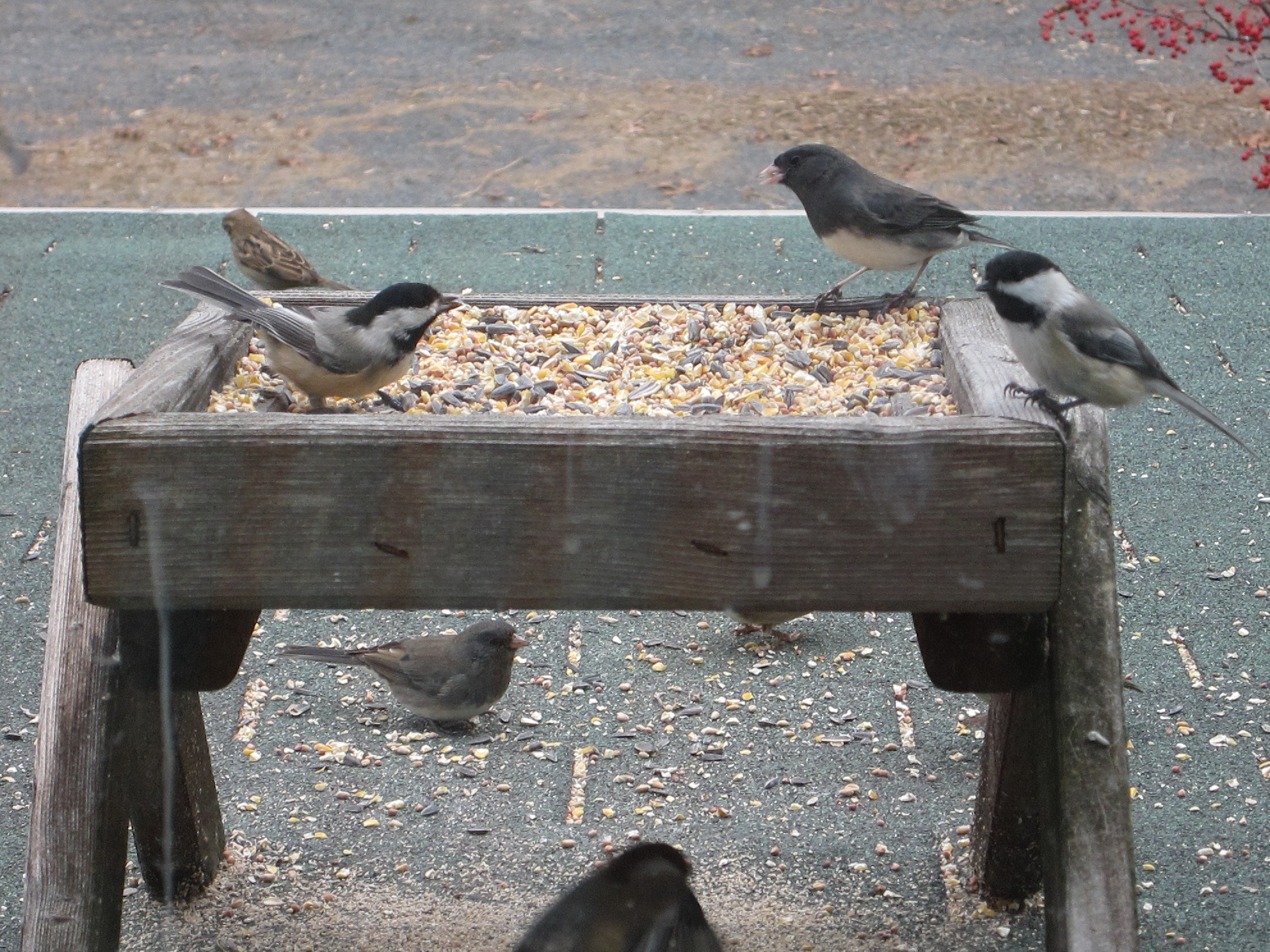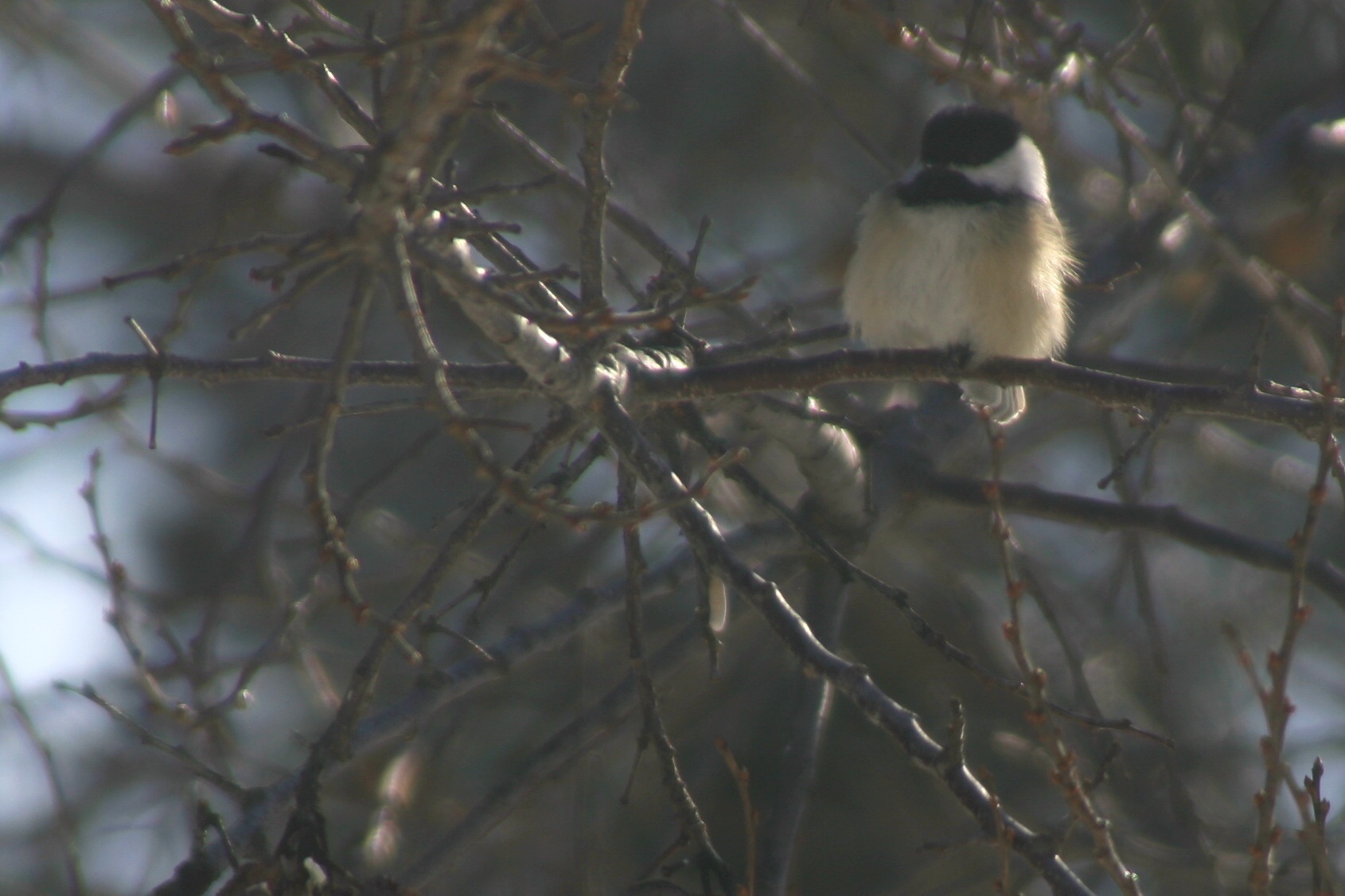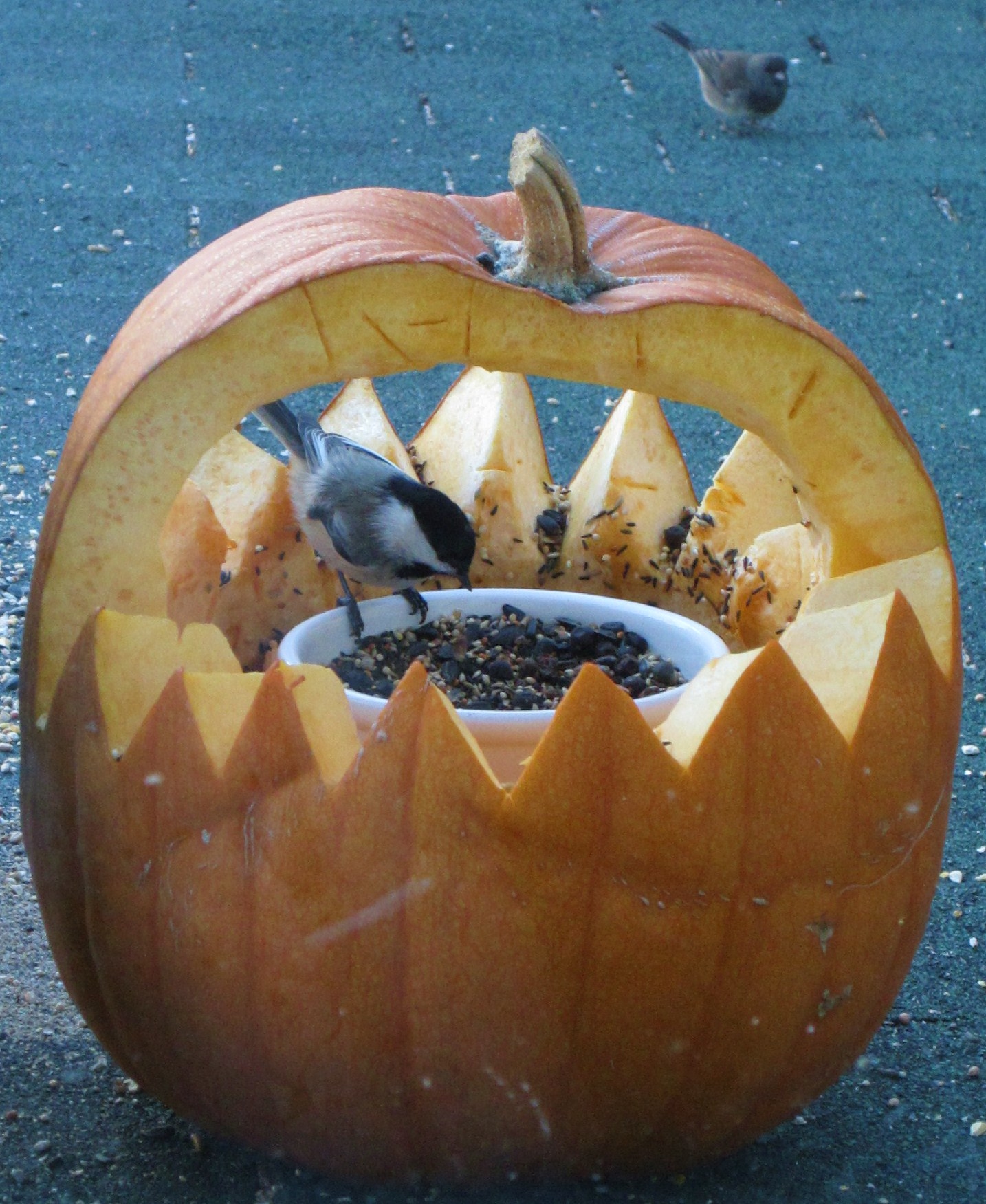Black-capped chickadee I embroidered.
I've made a couple of the bird ornaments from this website, and all are very easy to piece together and embroider.
There are five pieces of felt needed to
create this black-capped chickadee.
The black-capped chickadee is a familiar bird here at our farm. It is a frequent visitor at the bird feeders, especially one on the mudroom room that is right outside where we homeschool. The little chirps always alert us that a chickadee is at the feeder.
The chickadees eat well alongside other birds at the mudroom feeder.
When they are done eating, they fly off into one of the pine trees along the driveway or in the front yard.
All About Birds has some interesting facts about black-capped chickadees:
- Chickadees hide seeds and other food items to eat later. Each item is placed in a different spot; and the birds are able to remember thousands of hiding places.
- Every autumn black-capped chickadees allow brain neurons containing old information to die, replacing them with new neurons so they can adapt to changes in their environment and social flocks even with their tiny brains.
Chickadee in the plum tree.
- Chickadee calls are language-like and complex. They can communicate information on recognition and identity of other flocks as well as predator alarms. The more "dee" notes in a chickadee-dee-dee call, the higher the threat level.
- Chickadees like to live in mixed and deciduous forests, open woods, willow thickets, parks, and cottonwood groves.
- During the winter, chickadees eat about half berries, seeds, and other plant matter, and half animal food (spiders, suet, insects, and sometimes bits of meat and fat from frozen carcasses). In spring, summer, and autumn, spiders, insects, and other animal food make up 80-90 percent of their diet.
Chickadee eating homemade Amish bird suet that we made.
- At feeders, these birds like to eat peanuts, suet, sunflower seeds, peanut butter, and mealworms. They peck a hole in the shell, and then chip out and eat tiny bits of seed while expanding the hole.
- Nest boxes are often used by chickadees, especially when filled with sawdust or wood shavings. To keep wrens out of boxes you want chickadees to nest in, place nest boxes at least 60 feet into a wooded area. The entrance hole does not matter at all, but chickadees seem to prefer an unobstructed path to the entrance hole, without leaves and branches in the way. Setting a nest box farther back from other branches and trees helps deter mice and squirrels from jumping to the box and eating chickadee eggs and nestlings.
Chickadee eating from a pumpkin feeder
that I made one year around Halloween.
- Black-capped chickadees are one of the easiest birds to attract to feeders, for sunflower seeds, suet, and peanuts. They don’t mind using tiny hanging feeders that swing in the wind, and also readily visit window feeders. Planting birch, alder, and willow trees provides future nesting habitat for chickadees.
**Note: All the photos of the black-capped chickadees were taken at our farm.**








3 comments:
I love little chickadees so I sure enjoyed this post and your awesome little bird!
I confess. I'm not sure I'd know a chickadee if it flew into my yard. I am familiar with cardinals, but that's about the extent of my knowledge of birds. Having said that, I certainly enjoyed today's post. And I LOVED the pumpkin feeder!
Wonderful! I can't wait to show this to my daughter. She loves to sew and stitched a purple parrot for me.
Post a Comment